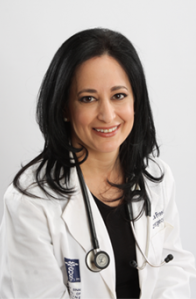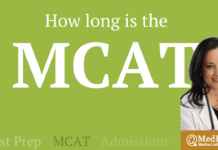Best Extracurriculars for Medical School: The Ultimate Guide (2024-2025)
It’s not just high school students who need to wow admissions committees with their extracurriculars. Your GPA and MCAT will get you to the door but your extracurricular activities will set you apart in the medical school application process.
As a prospective medical student, you also need to find ways of showcasing your passion through your scholarly pursuits, activities, and hobbies. When writing your medical school personal statement and work and activities entries you will be highlighting the most important aspects of your experiences.
While you don’t have to participate in every extracurricular to be successful in gaining entry to med school, the most competitive students choose their activities wisely. Additionally, they go out of their way to explain what they learned from their extracurriculars and how it will help them succeed in a medical career.
Keep reading for tips on choosing extracurriculars to help you get into medical school. Discover what activities and how many hours of each will make you the most competitive for medical school.
Types of Extracurriculars
Of course, medical schools want to know that the students they accept are academically gifted. However, competitive programs look beyond grades and test scores when making admissions decisions. Recognizing that a career in medicine involves a great deal of hard work and stress, schools want to ensure that applicants are truly passionate about the field.
Additionally, medical schools want to know students can handle difficult situations, such as dealing with confrontational patients or research disappointments. To that end, students should take pains to develop a strong extracurricular profile before applying to schools.
Below are some types of extracurricular activities that medical schools look for when selecting applicants and the recommended number of hours for each activity:
Community Service
One of the best extracurriculars for aspiring physicians, community service is a way of showing schools you’re passionate about donating your time and giving back. Community service is also a way to showcase your cultural competence and ability to work with people from populations different from your own.
The most competitive applicants will have completed more than 100 hours of service during the course of their undergraduate career. With the 2024 application cycle, a “social justice” category was added to AMCAS and this usually overlaps with community service initiatives.
Physician Shadowing
Medical schools want to be confident that students know what to expect from their chosen careers. With that in mind, physician shadowing is a key extracurricular activity for med school applications.
You can opt to shadow the same doctor or spend time with different specialists in various settings, including clinics and hospitals.
Strive to complete 25 – 50 hours of shadowing before applying to schools.
Patient Exposure
To be successful as a doctor, you need to be able to interact with patients with confidence, clarity, and compassion. To that end, schools look for applicants who have hands-on experience working with patients. Note that patient exposure does not include tasks related to cleaning, housekeeping, or shadowing.
Direct patient exposure can be tough to find as an undergraduate student and many applicants spend a gap year after college obtaining this experience.
Possible roles through which you can gain hands-on patient care experience:
- EMT (emergency medical technician)
- Scribe
- Medical assistant
- Phlebotomist
- Clinic volunteer
- Hospice care assistant
The goal is to show you can communicate with patients and help them in various settings and situations. Competitive students typically have 50 or more hours working directly with patients.
Leadership
Future doctors need to excel when it comes to leading others. Along with holding formal positions in clubs and student organizations, leaders should be able to take initiative and direct others in an array of settings, from research labs to volunteer groups and even classrooms.
To be competitive as an applicant, try to show that you’ve been a leader in at least three different situations. Keep in mind that leadership can come in different forms and “titles” are not necessary to demonstrate it.
Research
Research is a crucial aspect of the medical field, so it’s no surprise that medical schools seek out students with research experience.
While many students complete hypothesis-based research as part of their education, competitive med schools are especially interested in applicants who participate in independent research efforts outside the classroom.
If you can get named on a publication, that is terrific but this isn’t always possible and medical schools are aware of this. Therefore, the quality of the work you do is much more important than a publication.
For best results, you should strive to work for a minimum of one year in a lab environment.
Hobbies
Of course, medical schools aren’t just interested in extracurriculars related to an applicant’s future career goals. If you want to stand out from the pool of applicants, it’s a good idea to showcase an array of hobbies as part of your admissions package.
When choosing what activities to highlight, focus on those that show your personality and talents. For example, if you are an editor for your college newspaper, you could use this fact to highlight your communication skills and leadership ability.
On the other hand, if you play a sport at your college, you could mention this fact to show you excel at teamwork.
The goal is to reveal your passions while making it clear that you’d be a strong addition to the med school community.
Tips for Choosing Extracurriculars
If you’re looking for extracurricular activities to add to your med school resume, it’s natural to feel overwhelmed. After all, future applicants have a lot on their plates, and it can be difficult to prioritize their time. The good news is that there are some ways to narrow your focus and choose what extracurriculars are most likely to make a good impression on adcoms. Here are some tips on choosing extracurriculars for medical school:
Choose Quality Over Quantity
Medical school applicants often think that the best way to get into college is to present the admissions committee with a laundry list of hobbies. However, when it comes to extracurriculars, quality is what matters. Rather than participating in dozens of hobbies for just a few hours, invest your time in a handful of activities about which you’re truly passionate.
In other words, you don’t have to mention the week you spent working with Habitat for Humanity. However, if you volunteered your time with nursing home residents for two years, you should definitely include that on your resume.
Keep in mind, there are no shortcuts when building your extracurricular profile. You must put in the time to find meaning, results, and understanding. This is part of the reason many applicants now opt for gap years after medical school.
Look for Multi-Purpose or “Triangulated” Activities
Since your free time is probably limited, it pays to prioritize activities. One of the best ways to improve your applicant profile is to look for activities that show off multiple talents or abilities at once.
For example, you can reveal your talent for leadership and your dedication to volunteer work by organizing a health fair on your campus. On the other hand, if you want to convey your passion for medicine while showing your skill as a teacher, along with your commitment to service, tutoring students in math and science is a great way to go. By combining activities in this way, you’ll save time while gaining valuable experience in your chosen field.
Focus on Meaning and Impact
Medical schools don’t just want to know what activities students pursue. They’re also interested in what these hobbies mean to applicants. Rather than simply listing your extracurriculars, take time to explain what you learned from the experience. You also want to identify the impact your work had; if this can be quantified in some way that is great, but this isn’t necessary.
The goal is to give the adcom an idea of what activities were personally beneficial to you and helpful on your road to becoming a doctor.
Find your Niche and your Slogan
The most competitive medical school applicants typically find a niche in which they excel and focus most of their efforts on that niche. In our experience, most students have a singular niche and then a close second place niche.
Think about what your slogan is as demonstrated by your activities. Even though medical school applicants have similar experience types, no two have the same slogan.
For example, student A has 1000+ hours of oncology clinical trials research experience and then did Teach for America.
- Student A’s Slogan:The teacher and budding oncology researcher.
Student B has 1000+ hours of service experience at a public health advocacy organization that brings farmers markets to inner city communities and was a varsity fencer in college.
- Student B’s Slogan: The public health advocate fencer.
Both of these students have outstanding yet different experiences that will set each of them apart in the process.
In other words, you want to be a “generalist” and try to have experiences in most of the categories above but you then want to find your “specialty” interest and explore that interest deeply. What is your slogan?









